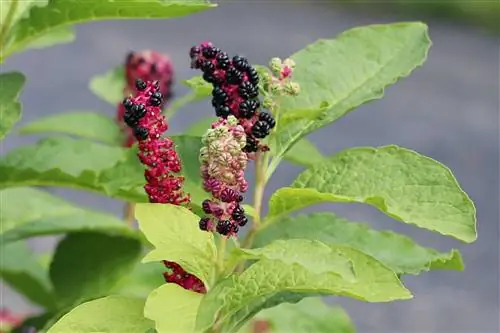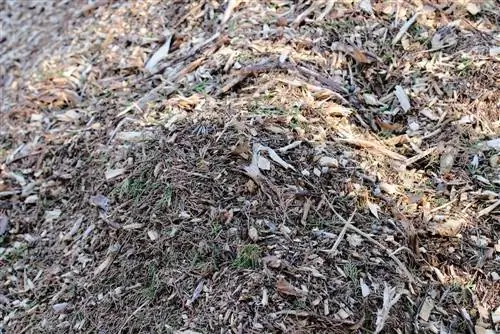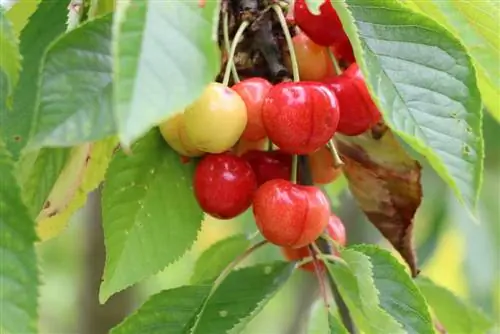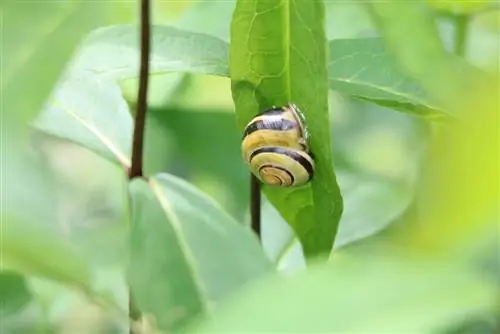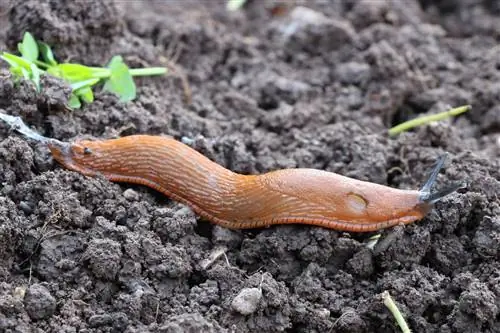- Author admin [email protected].
- Public 2023-12-17 03:39.
- Last modified 2025-06-01 06:48.
There are quite a few different types of pokeweed. The Asian pokeweed is mainly widespread here. The plants go wild. They are generally not very popular and are even on the black list in some European countries - on the red list in Germany.
The pokeweed looks good, especially its inflorescences. However, it is poisonous and it is spreading rapidly. The American pokeweed is even more poisonous than the Asian one. In the Asian version, the fruit clusters are upright, while in the American version they hang down on the perennial.
The Asian pokeweed, native to China and Japan, India and naturalized here, is also called edible pokeweed or edible pokeweed. It contains saponins in the leaves, fruits and roots - potential poisons. As if it wasn't difficult enough for parents or collectors to get to know the common poisonous plants in our country, there are also plants that produce poisonous and more harmless specimens within a species. One of them is the pokeweed.
Types of pokeweed
The genus Phytolacca, pokeweed, consists of 25 species, some of which are cross-named with different synonyms. None of these species are native to Europe, but two of them have become naturalized here: the Asian pokeweed (Phytolacca acinosa or esculanta) and the American pokeweed (Phytolacca americana L. or Phytolacca decandra).
The Asian pokeweed, native to China and Japan, India and naturalized here, is also called edible pokeweed or edible pokeweed. It contains saponins in the leaves, fruits and roots.
We also know saponins from legumes; they are also found in asparagus and beetroot, sugar beets contain them as well as various medicinal plants such as daisies or chestnuts. They can often be used as pharmaceutically active substances; active ingredients from the root of Phytolacca acinosa are said to reduce edema in current medicine. But saponins are also potentially toxic if you consume too much of them or eat the wrong parts of a plant. Different parts of the plant contain different concentrations. The most active ingredient is contained in the seed, then come the root, the leaf, the stem, the unripe fruit and the ripe fruit.
The American pokeweed (Phytolacca americana L. or Phytolacca decandra) also grows in Europe today, and here too the whole fruit contains saponins. But that's not all, the fruit also contains betacyans. Betacyans are alkaloids that are generally toxic. The saponins in the American variety are also said to be more aggressive. The active ingredients of this plant are also used in homeopathy, but they are certainly not for self-experimentation.
There are many other species of pokeweed, but we will only encounter them in distant countries (from South America to Southeast Asia to Ethiopia and New Zealand).
The pokeweed in the garden
There is a lot of confusion surrounding pokeweed and its name. Sometimes the Asian one is supposed to be edible, sometimes the American one, sometimes the Phytolacca acinosa is called the American pokeweed, here things get mixed up.
You should definitely only plant the Asian variant in the garden. You can distinguish first by paying close attention to the Latin name when purchasing. The American pokeweed also looks a little different, it has smooth leaves and smooth fruits, the fruit cluster of which is upright. The Asian pokeweed, on the other hand, has multiple notched leaves that look slightly wrinkled. The fruits have many small segments, the fruit cluster usually hangs downwards.
The pokeweed requires little care as it is used to poor, wild growing conditions. Only in really cold winters is she grateful for good coverage. It is more difficult to get rid of pokeweeds that have been sown yourself; they develop large root nodules that have to be removed very thoroughly.
Uses of pokeweed
- Even with the Asian pokeweed, you should make sure that children do not eat too many berries. Vomiting, stomach and intestinal problems, diarrhea and cramps could result. For adults and older children, a quantity of up to 10 fully ripe berries is considered harmless. But they're not supposed to taste very tasty anyway.
- If you have a different opinion on this, you can heat the berries before eating; saponins are rendered harmless by cooking. But since most of the saponin is in the seeds, either very thorough heating is necessary or crushing so that the cooking water quickly gets to the saponin in the seeds. Eating the young leaves as a spinach-like vegetable is not recommended today because of their saponin content.
- If you have completely lost your appetite, you can still use the pokeweed for coloring. With the help of the betanin it contains, which is also used to color yoghurt, chewing gum or jam under E number 162, fabric or wool can be dyed red. However, it is not lightfast, so the color may fade.
Operation against snails
- The seeds and roots of the pokeweed are used to combat snails.
- They are boiled and then dried and ground.
- Add 4 tablespoons of ground berries to one liter of water.
- When watered, the saponins contained in the plant break down the mucous membranes of snails and their eggs.
- At the same time, the pH value of the soil increases.
- Careful! Contact can trigger serious allergies in sensitive people. Always work with gloves and avoid skin contact!
Care for pokeweed
The pokeweed is not very demanding. It often sows itself in the garden and is spread by birds.
- Location - sunny to partially shaded
- Planting substrate - humus-rich, slightly sandy soil, evenly moist to moist, not too dry
- Plants - recommended planting distance 80 to 100 cm, particularly effective as a solitary plant
- Watering and fertilizing - keep the soil evenly slightly moist, pond water is ideal, organic vegetable fertilizer is suitable as fertilizer
- Wintering - hardy in mild locations. Otherwise, some seeds are guaranteed to sprout and you have a new plant. In late autumn the above-ground parts dry out. You simply cut them off. Cover the plant (root) in winter!
- Cutting - no need to cut. If you don't want new plants in the garden, dead flowers have to be removed regularly!
- Propagate - by sowing, is very easy or by dividing the roots. The plant self-seeds abundantly, which means it can become a pest.
Conclusion
The pokeweed is quite new in German gardens, but is becoming increasingly popular. It is a fairly large, showy plant that works best as a specimen plant. You can only buy them very rarely. Since birds spread the seeds everywhere, they sprout surprisingly in many gardens. If you don't remove the seed heads before they are ripe, the pokeweed will spread profusely. Caution is advised if you have children. The plant and especially the berries are poisonous. It is better to wear gloves when planting and handling the plants!

